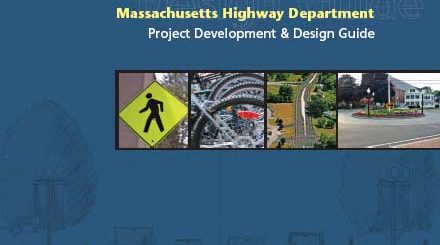MassDOT = GreenDOT
January 31, 2013

MassDOT released their GreenDOT Implementation Plan on 12/12/12. The plan outlines a way forward (look for more about The Way Forward in a future post) to reduce greenhouse gases and increase the share of non-automobile transportation in Massachusetts.
MassDOT has been lauded by the American Association of State Highway and Transportation Officials (AASHTO) and rightfully so. GreenDOT is bold and ambitious, outlining sustainability initiatives through changes in seven key areas: air quality, energy consumption, land management, materials procurement, transportation planning and design, waste management, and water resources.
From a transportation planning and design perspective, MassDOT has aimed even higher by setting a very key goal: triple the percentage share of walking, cycling, and transit by 2030. In Massachusetts, auto trips account for 97.6% (or ~85 billion) Person Miles Traveled (PMT). In stark contrast, walking accounts for 0.12% (or 101.1 million PMT), and bicycling accounts for 0.17% (or 150.4 million PMT) for all purposes (work, recreation, shopping, etc.). Statewide, mass transit accounts for an additional 2.09% (or 1.83 billion PMT). Although the percentages seem small comparatively, tripling the numbers of PMT by walking, cycling, and transit, would be a significant change.
Howard/Stein-Hudson Associates focuses on transportation planning and design. What can we, as transportation and land development design professionals, do to support GreenDOT?
Maybe you’re already doing a lot in your private life – you take the T, you recycle, you drink from a reusable water container instead of buying bottled water.
Here are some ideas for ways to “green” our transportation practices:
- Promote transportation options. This means providing people with the option to use active modes (walking, biking) and transit in addition to a single-occupant vehicle. To achieve this, those modes need to be included in the planning and design (or re-design) from the onset, and not as an afterthought. Good news – many of the recent street design standards now require this (see MassDOT’s Project Development and Design Guide) and provide the necessary design flexibility to provide for multimodal transportation.
- Increase efficiency of operations. This means using technology advances to optimize traffic signal operations so there is less idling and wasted time. Technology such as countdown pedestrian indications and transit information boards to give people real time information about travel and wait times.
- Promote alternative/active modes. Everyone is a pedestrian at some point in their travels. Even if you only walk from your front door to your car, your front door to your bike, or your front door to the bus stop, you are a pedestrian for those few (or more) steps. How can we make the pedestrian environment safer and more comfortable for all pedestrians, including those with disabilities?
The bottom line: transportation choices = less people in cars = less traffic = more efficient vehicle movement.

Leave a Comment